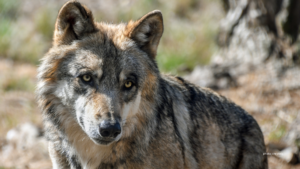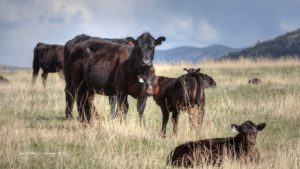For Immediate Release, June 25, 2024
| Contact: | Michael Robinson, Center for Biological Diversity, (575) 313-7017, michaelr@biologicaldiversity. Cyndi Tuell, Western Watersheds Project, (520) 272-2454, cyndi@westernwatersheds.org Sandy Bahr, Sierra Club, (602) 999-5790, sandy.bahr@sierraclub.org |
Letter Urges Mexican Gray Wolves to Be Released as Families
SILVER CITY, N.M.— A coalition of conservation organizations today requested that the U.S. Fish and Wildlife Service resume releasing captive-born Mexican gray wolf pairs together with their pups into Arizona and New Mexico. Releases of wolf families that survive and breed would diversify the wild population’s depleted gene pool.
“Keeping families intact as they transition to living in the wild is the key to saving the Mexican wolf from extinction,” said Michael Robinson, a senior conservation advocate at the Center for Biological Diversity. “Sadly, we know that three-quarters of the captive-born pups released into wild wolf dens through last year simply disappeared, leaving the gene pool stagnant. The Fish and Wildlife Service has to change course.”
The Service discontinued releases of well-bonded wolf families after 2006 because of pressure from the livestock industry. Since 2016 the agency has instead released captive-born pups into the dens of wild wolves.
Only 24 of the 99 pups released without their parents from 2016 through 2023 were ever seen alive again.
In contrast, the Service found that six out of nine adult pairs who were released with their dependent pups into areas with adequate native prey were successful.
“This can’t be a numbers game based only on the number of pups put out into the wild. Wildlife agencies need to use pup survival and the indicators of genetic diversity to support adult and family group releases,” said Cyndi Tuell, the Arizona and New Mexico director of Western Watersheds Project. “Releasing wolf families together gives the pups the best chance of surviving to reproductive age, which gives them the best chance of passing along their genetic diversity.”
Today’s letter, signed by 18 conservation groups, cites the widely disparate survival rates between the two methods of release, and the genetic plight of the population, to argue for once again releasing family packs.
“It’s clear, based on the lower survival rates of cross-fostered pups versus the introduction of intact wolf families, that the U.S. Fish and Wildlife Service needs to adjust its course and do everything possible to get more wolf families in the wild sooner,” said Sandy Bahr, director for Sierra Club’s Grand Canyon (Arizona) chapter. “This is important for the genetic diversity of the Mexican wolves, but also to give these wolves their best chance to survive and thrive in the wild.”
Successful releases of Mexican wolves from the captive population are necessary to increase the genetic diversity of the wild population. The captive population that is housed in zoos and specialized facilities retains 36% more genetic diversity than the wild population in the United States.
Background
Mexican gray wolves are a genetically and morphologically unique gray wolf subspecies native to Mexico and the southwestern United States.
In the 20th century the U.S. government sought to exterminate wolves in both nations on behalf of the U.S. livestock industry. The Mexican wolf was saved from extinction following the 1973 passage of the Endangered Species Act through the captive breeding of six wolves captured alive from Mexico and one captured from Arizona.
###






